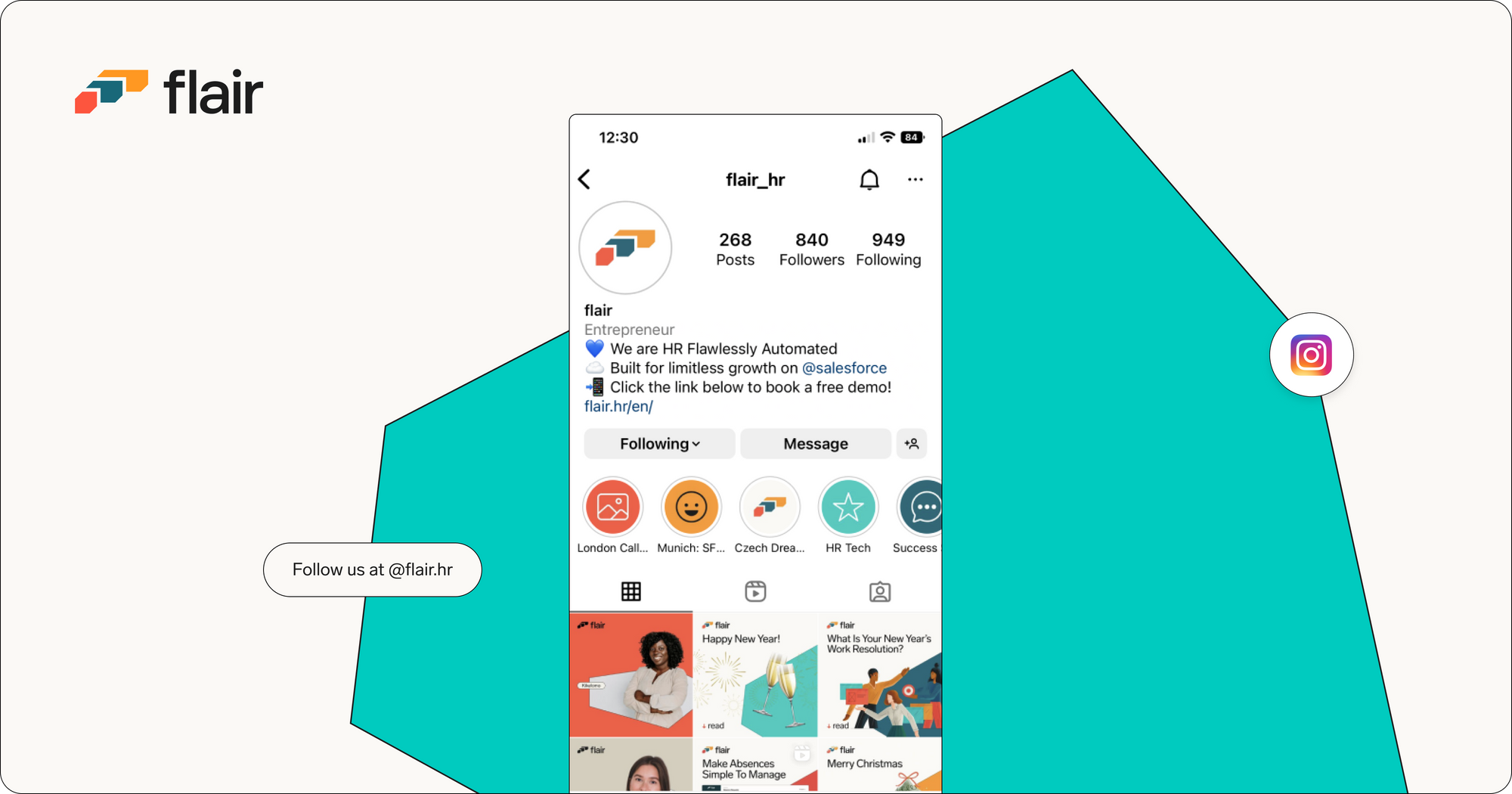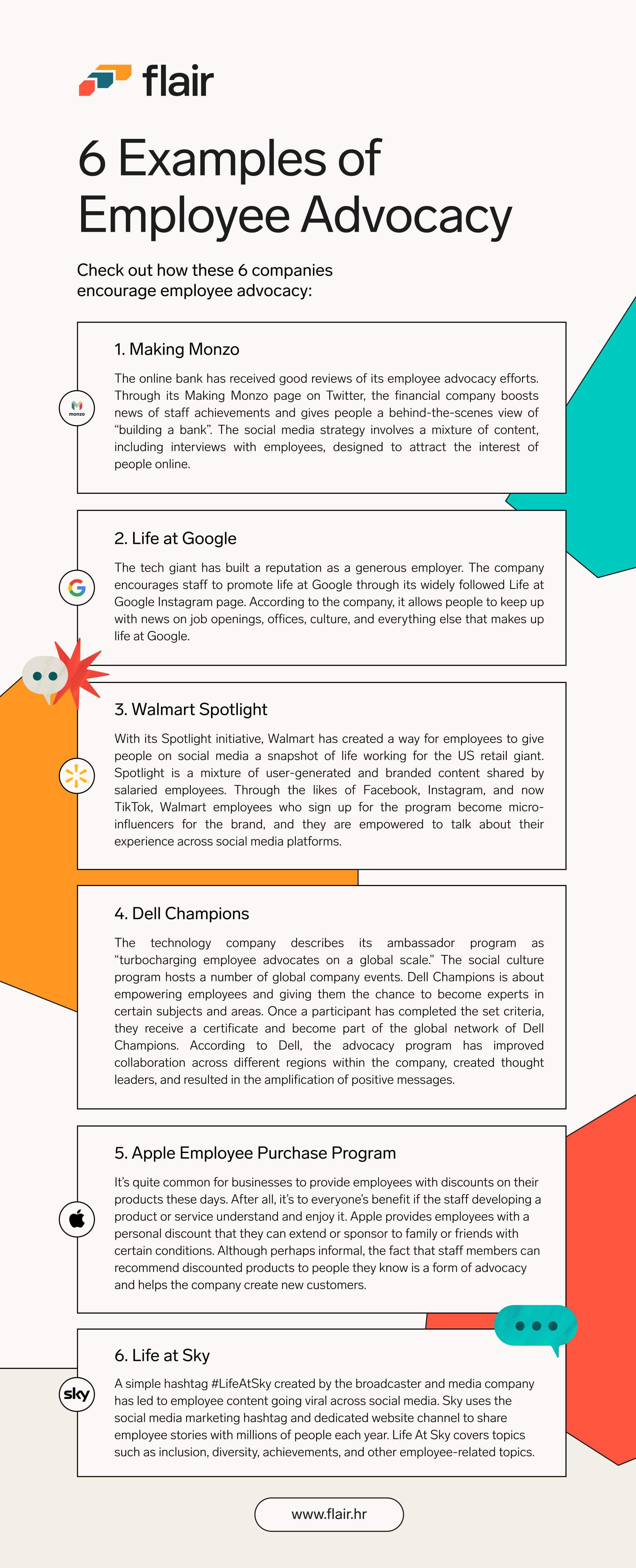Origins to Innovation: Cloud Computing's Impact on HR
Do you know why it's called cloud computing and are you aware of the benefits to HR?
- 06 Jun 2024
- Max 11 min read
The Number One HR Solution on Salesforce
Let’s discuss the topic of employee advocacy and how staff ambassadors can boost brand awareness, sales, and sentiment – or even assist in attracting top talent.
A general rule many businesses abide by is: If employees enjoy their workplace and buy in then customers will too. Of course, as individuals, customers and employees share a common thread.
Like customers, employees have expectations and aspirations. Employees are a source of innovation and feedback. Customers are too. Employees help drive the success of a business, and customers certainly do too.
In the symbiotic employee-customer dynamic, one provides a positive outcome for the other and in many cases, there is even a crossover in roles. Here’s where an employee advocacy strategy can be an important tool when it comes to promoting a business, its culture, products, and services.
First, let’s take a look at what employee advocacy means. Then we can check out the benefits of employee advocacy and some top tips to help encourage staff to sing your company praises online in an authentic way.
Put simply, employee advocacy is when workers promote or act as brand ambassadors for the company that employs them. Any worker can play an active role in this and become an employee advocate.
These employee-led promotions can be communicated in a variety of ways, like casually recommending a product to a crowd at a party. However, in today’s modern world it’s less shouting from the rooftops and more advocating across social networks online.
Employee advocacy comes from staff within a company and provides organizations with the opportunity to spread an authentic message to a wider audience. Thanks to social media, the voice of a company’s workforce is a potential resource that can reach new audiences. Think of employee friends, family, and any other connections made possible through social media.
By sharing positive experiences and sentiments about employment conditions or maybe a product they’ve developed, employees can have a powerful impact. You may have already encountered examples of employee advocacy.
Perhaps you’ve seen employees share content about their company via a personal LinkedIn page. It might mean workers formally reviewing products online, sharing images from a fun work event, or even lending their voice to promotional campaigns on social media channels like Instagram.

It’s also worth noting that while employees are usually more than happy to publicly express their joy at a positive work experience, news of negative experiences can often travel much further online.
That’s why perfecting the employee experience and building a top-notch work culture are so important when building a strong employee advocacy framework.
So what benefits can come from encouraging employee advocacy? What can it do for a company? There should be employee benefits too, right?
Build Trust: The ubiquity of paid-for advertising has seemingly made people more discerning or even impervious to certain types of content. According to a Cision report, just half of consumers trust advertisements.
However, according to the report, 92% of people trust earned media, such as endorsements communicated by a third party like a friend, colleague, or family member. Allowing employees to enjoy your product or service can be part of a marketing strategy and boost important metrics. It can result in favorable recommendations to people they know or followers online. An increase in positive sentiment online and word-of-mouth backing can push companies up the leaderboard in terms of sales and new customers.
Brand Awareness: By engaging employees as brand advocates, companies can increase their organic reach in areas like social media. In this day and age, people cultivate large personal followings on platforms like Twitter, Facebook, Instagram, Youtube, and TikTok. Even employees have a personal brand. By encouraging staff to amplify company content on these channels, organizations can boost brand awareness, increase traffic to their online shopfront, and bring their message to new audiences.
New Business: When employees are included and empowered to become experts in the company, it can lead to increased sales or new business. For example, a salesperson who has been given the opportunity to use products or services via an advocacy program is more likely to be better equipped to talk about the benefits to potential customers. Furthermore, Forbes reported that sales teams using their social networks to cultivate leads can outsell their colleagues by up to 76%.

Attract Talent: The reputation of a company matters greatly to job seekers, as 69% of people are reportedly unwilling to take positions with organizations that have questionable reputations – even if they're unemployed. It’s hard to argue with that. Employee advocacy can be a powerful way to showcase the brilliance of your business and workplace. It's employees sharing their stories and spreading awareness about the environment in which they work.
Give recruiters an easy time selling your company to potential new joiners and increase workforce retention. For example, invest in employee experience and personal development.
The more employees enjoy a positive workplace culture, the more likely people will want to be part of that environment. Employees are also more likely to wax lyrical about the joys of their job, too. Let’s face it, everyone wants to work in a positive and enjoyable workplace.
Employee Happiness: By building a positive workplace culture and allowing employees to become more engaged in the company, the result is that workers likely feel happier. LinkedIn has reported that companies with a successful advocacy program are 20% more likely to retain top talent. According to Salesforce, employees who feel their voice is heard are 4.6 times more likely to feel empowered to perform their best work.
Thought Leadership: Employee advocacy can result in better-informed staff which in turn can lead to greater career development for individuals. The aim of employee advocacy from a company perspective should be to encourage staff to share information and content that benefits the business. To do this, employees need to be in the loop and understand more about the ins and outs of the company. Staff that are given the tools to succeed as brand ambassadors often become experts in fields related to their job or company.
Career Opportunities: This leads us to our next benefit. Employees that are in the driving seat in terms of promoting a brand, or staff that are given the opportunity to be public-facing experts, open up doors for further development. For example, an employee being championed via social media posts as a company influencer may develop new skills such as public speaking, or discover new avenues for career development.
Employees are more likely to refer your company if they feel inspired by what you stand for. An employee advocacy program is a framework through which you can encourage employees to promote your brand. Here are some tips for building the foundations for and then implementing an employee advocacy platform.
Set Goals: Before you start an employee advocacy program, it's important to think about what success means for your company. What are your advocacy KPIs and how do you want to encourage staff to promote your brand? Will you aim to have a certain percentage of employees share branded content? Is it worth setting up an employee advocacy training program? Is there an engagement rate you want to aim for? Think about your aims and then set about achieving them.
Advocacy Training: Getting your employees to understand the advantages of social media and employee advocacy is essential. Outlining what employee advocacy is and how staff and the business stand to benefit can be a great foundation for future brand messaging. Customizing an advocacy training program that suits your company can be a real asset. Make sure to show how your staff can boost reach, increase opportunities and become thought leaders by sharing relevant content publicly.
Identify Advocates: As with anything in the workplace, communication is key. A smart place to start when introducing an employee advocacy program is to choose who you want to actively promote your company. Perhaps you will have team members test out upcoming products at home for free and then provide channels for them to communicate reviews. Maybe you will encourage new hires to post about their first few weeks at the company. Either way, it’s important to communicate to employees how you envision advocacy online.
Employee Engagement: Build a company culture that people are happy to talk about and amplify online. Help employees advocate by engaging in an open and positive way. After all, if you want your employees to be thought leaders and influencers, there should be social selling points to rave about.
Be Authentic: Set up frameworks and give employees the tools to effectively communicate company news, positive sentiment, and branded content. This means creating a brand reputation and work environment that staff actually want to publicize. It also means ensuring your advocates are knowledgeable about the company and able to communicate information accurately via the right channels.
Incentivize: Employee advocacy incentives or initiatives are a way to keep people energized and engaged in promoting a business over the long term. For example, depending on the organization, this could be providing staff with a monthly stipend to trial company products. It could mean recognition-based prizes or gift cards that celebrate a job well done. After all, a successful employee advocacy program should make it easy and enjoyable for staff to be ambassadors.
Track Results: Once you have created an employee advocacy program that fits your company, make sure to measure the impact and results. For example, what percentage of employees are sharing content that helps your business? Or, how much traffic derives from employee-generated content? To do this you may want to explore the use of UTM codes, a simple piece of code that enables the tracking of content and social media campaigns. There are also a number of employee advocacy platforms to help you curate a brand ambassador campaign. They can also keep track of brand reach and analyze other important metrics.

At flair, we aim to improve the employee experience for our clients and help companies reach their potential through our intuitive HR management tools.
For more HR insights and tips on how to enhance your company culture, check out our other blog posts here.
Join flair’s newsletter to receive the latest tips & trends in the HR world.

